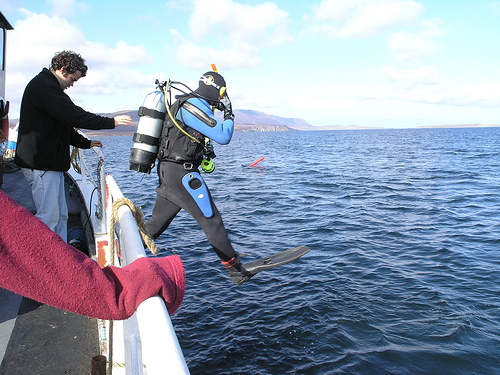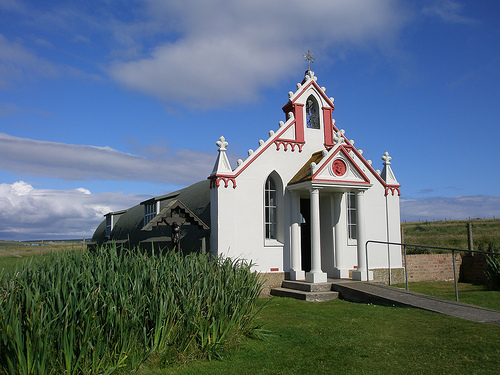With one of the largest natural harbours anywhere in the world Scapa Flow has been a haven for many ships seeking shelter for the past one thousand years. Today the area is less of a pretty holiday location and more of an interest site for those with an interest in the history of the area and modern industrial technology. There is a major oil terminal here which processes around 10% of the oil transferred from the oil fields in the North Sea. From the terminal the oil is transferred into vast ocean going tankers and transported around the world. The control centre which oversees all of this activity is located at Scapa Bay. The site is also incredibly popular with scuba divers, so much so that the tourist industry here is specifically geared towards them, the majority of people that come here from the UK and abroad do so in order to discover what lies on the ocean floor.

Wreck Diving
The sea floor here is flat and open, the depth varies from 60 feet down to 150 feet, and despite its location in the Orkney Islands there is very little in the way of strong currents to sweep you off course or disturb the sea floor too much. What there is of course is a wealth of sunken vessels on the sea floor making this a wonderful wreck diving location. It is estimated that around 20,000 divers come to the region every year just to discover what secrets the waters here hold.
History
Scapa Flow is believed to have been used by fishermen around 5,000 years ago, however any evidence to support this has long since eroded away. But there are records of the place in Viking history, as far as the Vikings were concerned their world extended from their home in Scandinavia to England’s North East Coast, and from Iceland across to Ireland, the Orkney Islands and Scapa Flow (Skalpeid-floi) lay at the centre of this world.
Shore defences were first built here in the 1800’s to protect the fishing fleet from the privateers (pirates) that sailed these waters under the French flag. In fact Scapa Flow would have very much gone unnoticed in history had it not been for the onset of was in Europe. A suitable base needed to be located that could harbour the fleet so that it could sail to meet with the enemy out at sea, the German fleet being safely harboured in the Baltics. Scapa Flow with its large natural harbour seemed an obvious choice. The Orkney Islands became home to thousands of service personnel over the coming years.
Scuttled Ships
One of the reasons why there are so many interesting wrecks to dive here is because in order to avoid his fleet being captured by the British a German officer, Admiral von Reuter ordered that the his fleet of 74 gunships and warships be scuttled in Scapa Flow. Some of the ships were later salvaged with their parts being sold for scrap, but many more remain in their final resting place on the sea bed.

